When I discovered that the cost of removing the chimney was the same as repairing it, a whole new set of possibilities opened up. I decided to remove the chimney, at least the upper portions of it, in order to expand closet space, open the kitchen, and install a skylight.
I had researched how to remove a chimney and concluded this was not beyond my skill level, but it was beyond my physical limits and time constraints. I found a demolition company that specialized in chimney removal and asbestos abatement.
It is a mutually beneficial combination. Asbestos removal requires specialized equipment and procedures to contain airborne particles. In removing a chimney, there is a tremendous amount of dust and dirt that is generated, and the same equipment can be used to constrain it.
I contracted Erickson Enterprises to remove my chimney. They arrived at 7:00 am with two large trailers: one with equipment, the other to haul away the bricks. They did an appraisal of where the chimney was with respect to the doors and windows of the house, and planned their strategy.
I was immediately impressed with their methods. Drop cloth runners were placed along any path through the house the crew of five might take. Plastic sheets were taped to the ceilings and walls to isolate the chimney. A blower with a HEPA (high efficiency particulate air) filter was lugged into position to create negative pressure in the containment area, preventing dust from entering the rest of the house. A relay system of buckets and ropes were used to bring the bricks and debris down from the roof, the second floor, then the first, to the waiting trailer.
I had the experience of climbing up to the roof (my first time up there!) and seeing the deteriorated rubber membrane that started this chain reaction of renovation activities. Even though the footprint of the house is almost 1000 sq ft, when one is on the roof deck, outside, looking across at trees and streets and sidewalks, it seems rather small. I kept to the center region away from the edge.
One of the crew members was elected to dismantle the chimney top. He lugged up a power chisel and the extension cord to run it, but then discovered that it was entirely unnecessary. He made an incision on the rubber membrane that wrapped around the chimney, and without the support of that skin the bricks essentially collapsed. The mortar was already dust. He plucked the bricks with gloved hands, chucked them into a bucket and when enough but not too many were in it, his partner would lower the bucket on a rope to another crew member at the bottom, who loaded it into a wheelbarrow. A few bricks per bucket, a few buckets per wheelbarrow, and a trip to the trailer would be made.
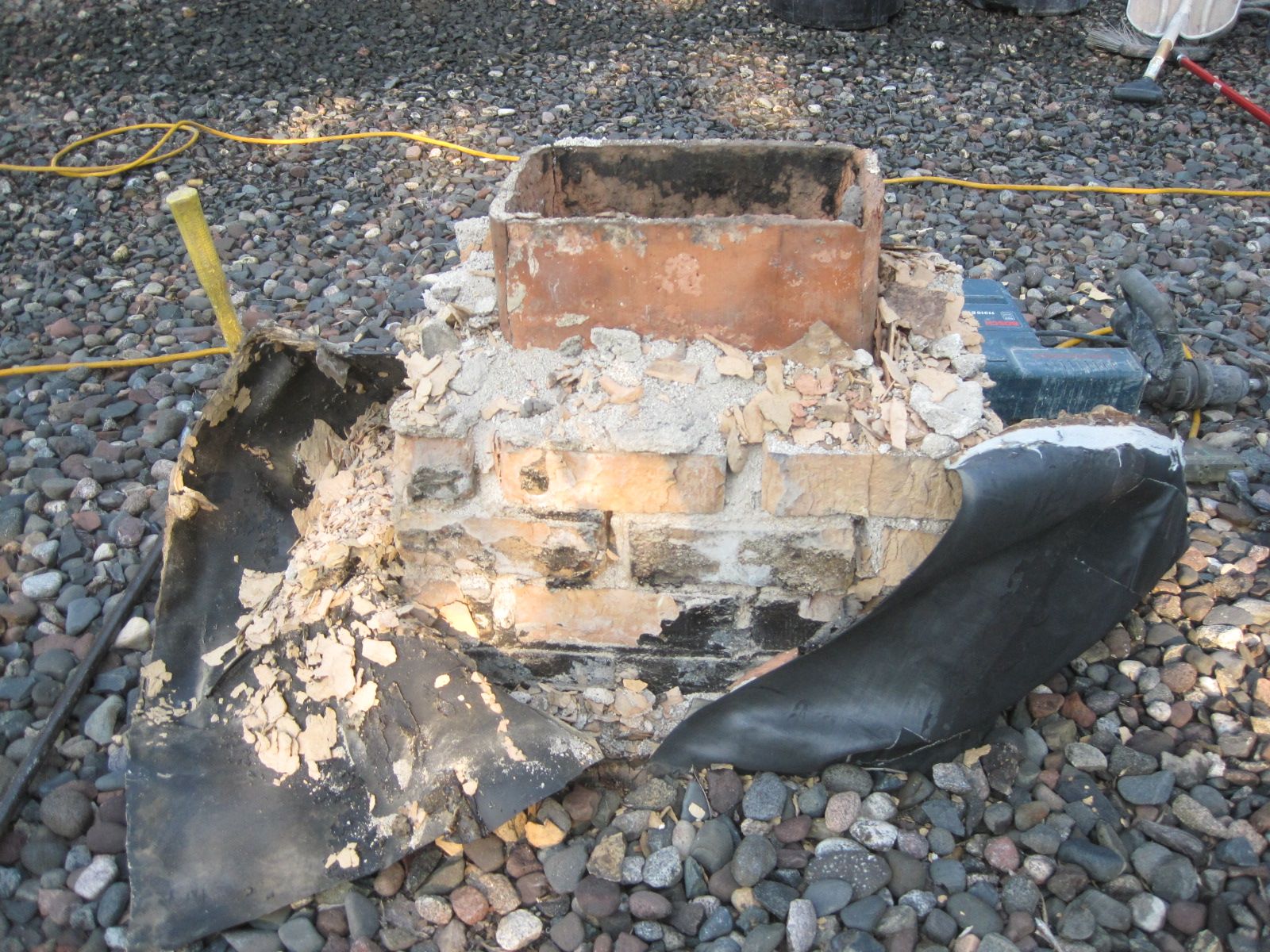
The rubber skin is cut, and falls away to reveal a stack of bricks and mortar dust, barely held in shape by the eroded chimney liner and outer membrane.
I found this all fascinating of course, and appreciated the teamwork, but my real interest was in seeing how the house was built under the roof surface. With the chimney being removed, I would have access to a cross sectional view of its structure. Inside the chimney was a metal flue, which easily pulled out, and the chimney liner, a rounded clay ceramic object that fit closely in the brick rectangle, but had been seriously weakened and eroded. Once again I heard expressions like “I haven’t seen one this bad before!”
The bricks, mortar and liner were removed from the top, using an occasional assist from a pry bar or hammer. Course by course, the bricks were removed, reaching below the roof level and into the framed hole. Eventually they were below the ceiling level of the second floor kitchen. At last I could see the cross section I was looking for.
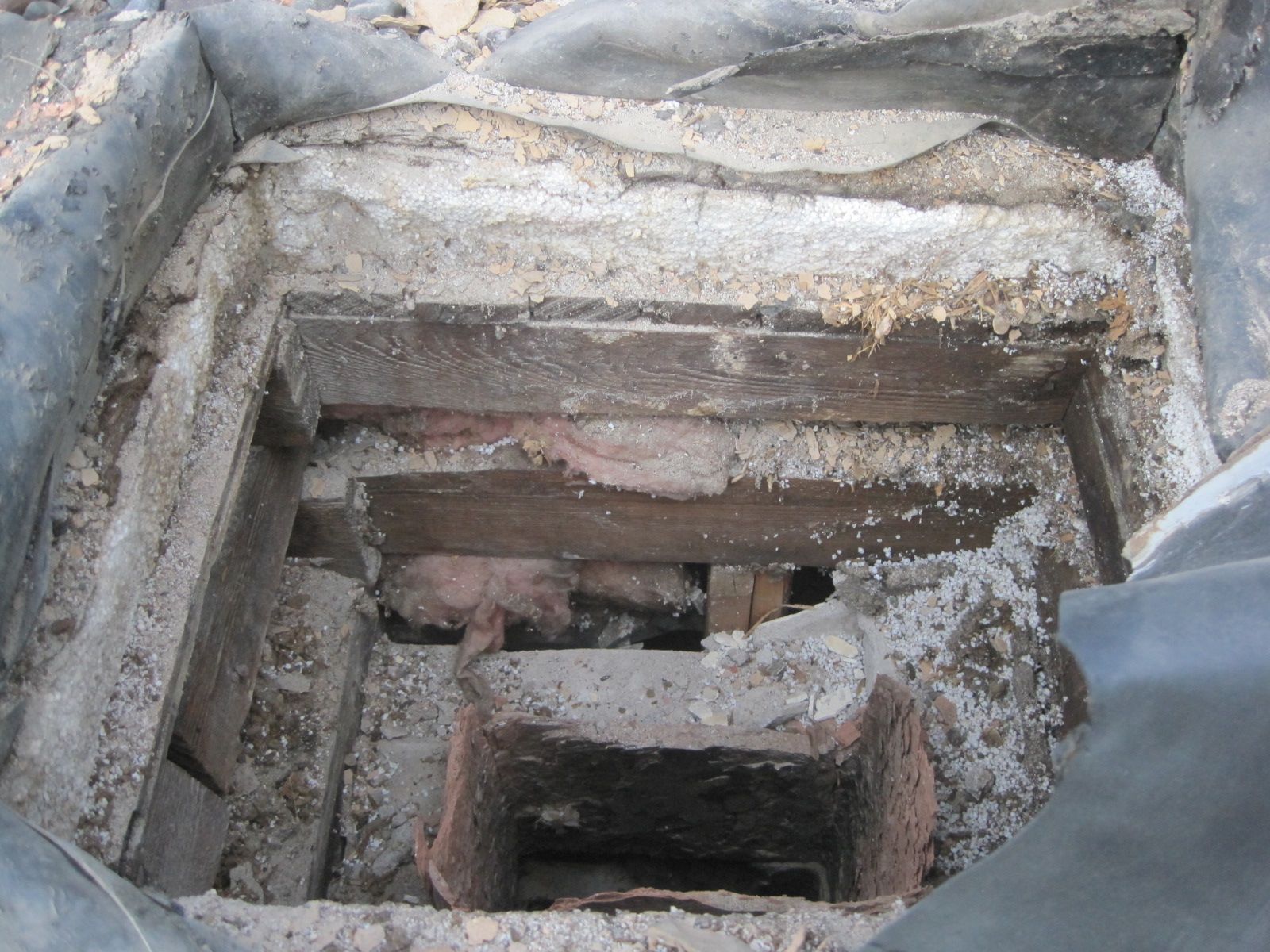
The exposed cross-section of the roof and “attic”. The topside excavation is reminiscent of Indiana Jones.
It was actually rather promising. Below the rubber roof was a layer of styrofoam insulation (yes, styrofoam!). A ceiling covered the 4-inch “attic”, which had fiberglass and blown cellulose insulation. Below that was the attic floor, the second story ceiling. I could also see the kitchen soffits, which also had been filled with pink fiberglass. I think the fiberglass and styrofoam make for a very good insulating layer, qualifying this roof as a “cold roof.”
Once the chimney had been decapitated, work progressed to the second floor. Some power chiseling was needed, as this was no longer decayed weathered brick; it still had structural integrity. Again, a few bricks per bucket, lowered out the window, a few buckets per barrow, and the dismantling progressed steadily. The HEPA fans exhausted the dust to the outdoors.
By noon, the crew had moved to the main level and devised their next brick removal plan. The chimney was in a closet, with tight access. They chopped and drilled their way into the side of the chimney, about three feet above the floor. Using this as an access port, one worker would chisel out the bricks from above, they would drop down and be intercepted at this porthole, thrown into the bucket, carried to the wheelbarrow; and the trailer just kept on filling. Eventually, chiseling from below became easier than from above, and the remainder of the chimney rapidly found its way to the trailer.
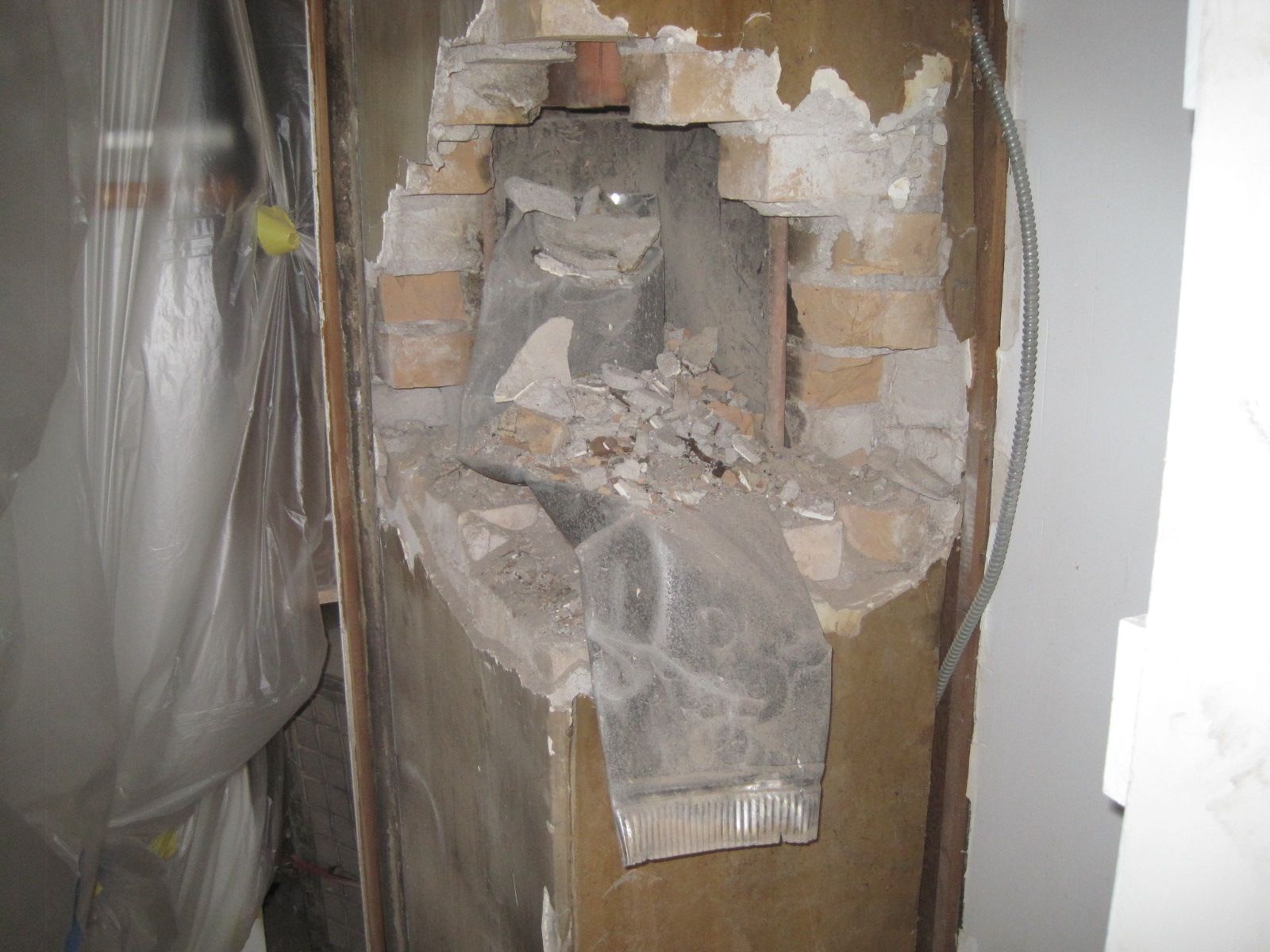
The side access port to divert bricks from above. Note the use of the flattened metal flue to act as interceptor/diverter.
The crew then cleaned up. They were meticulous. Every dusty mark and footprint was erased as they packed up their tools. If I had not been there, I would have concluded that the chimney had somehow magically vanished.

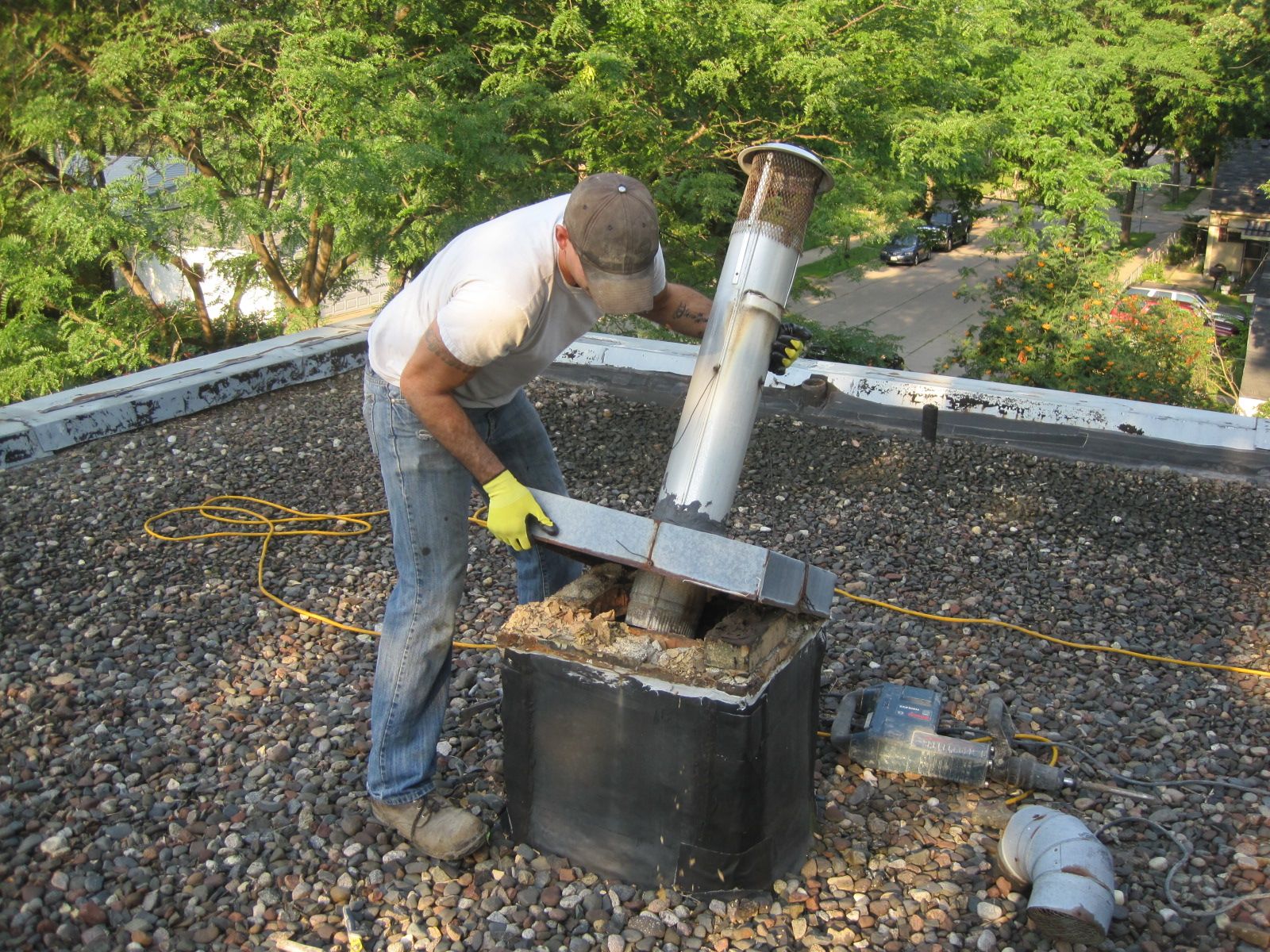
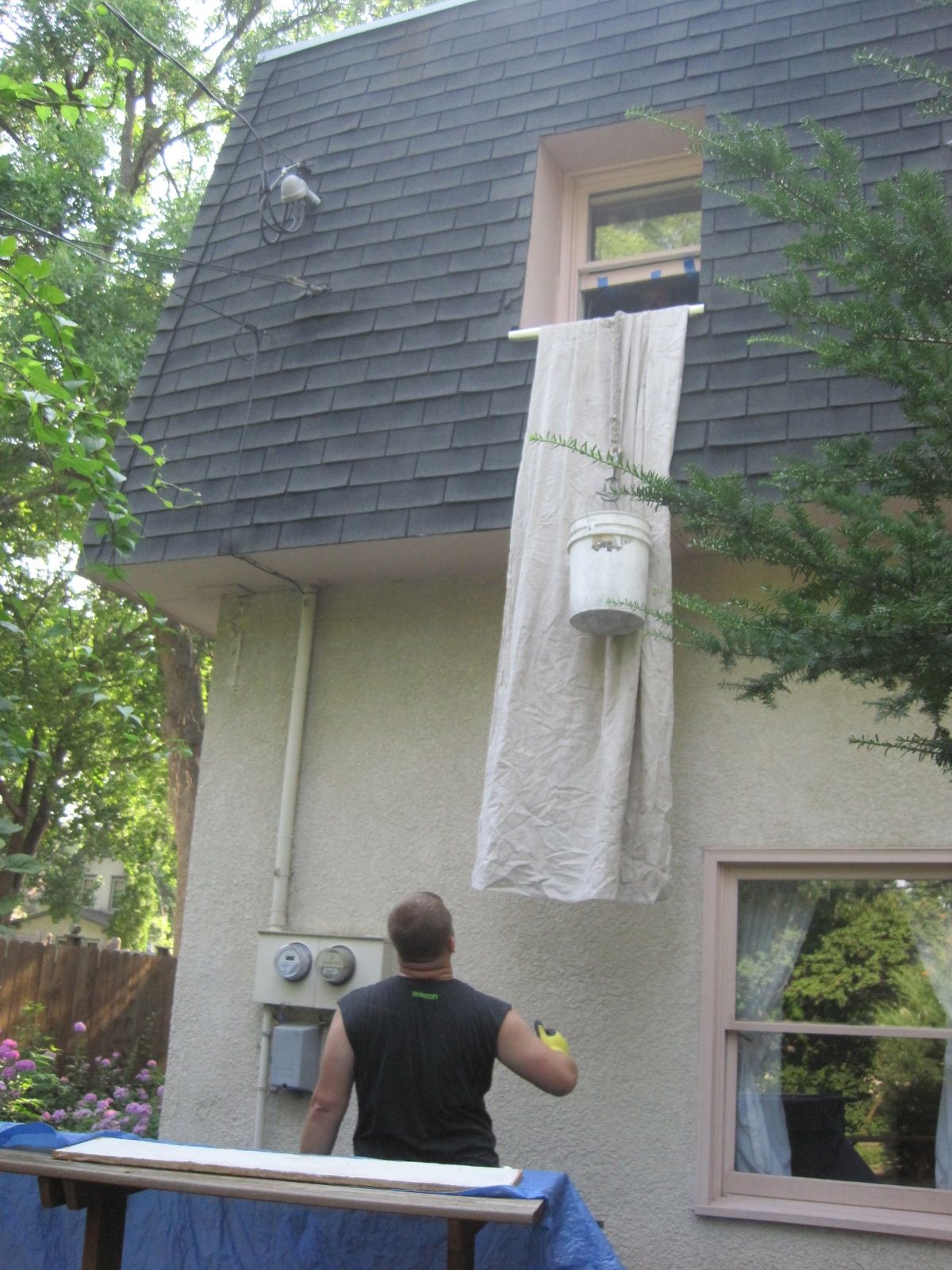
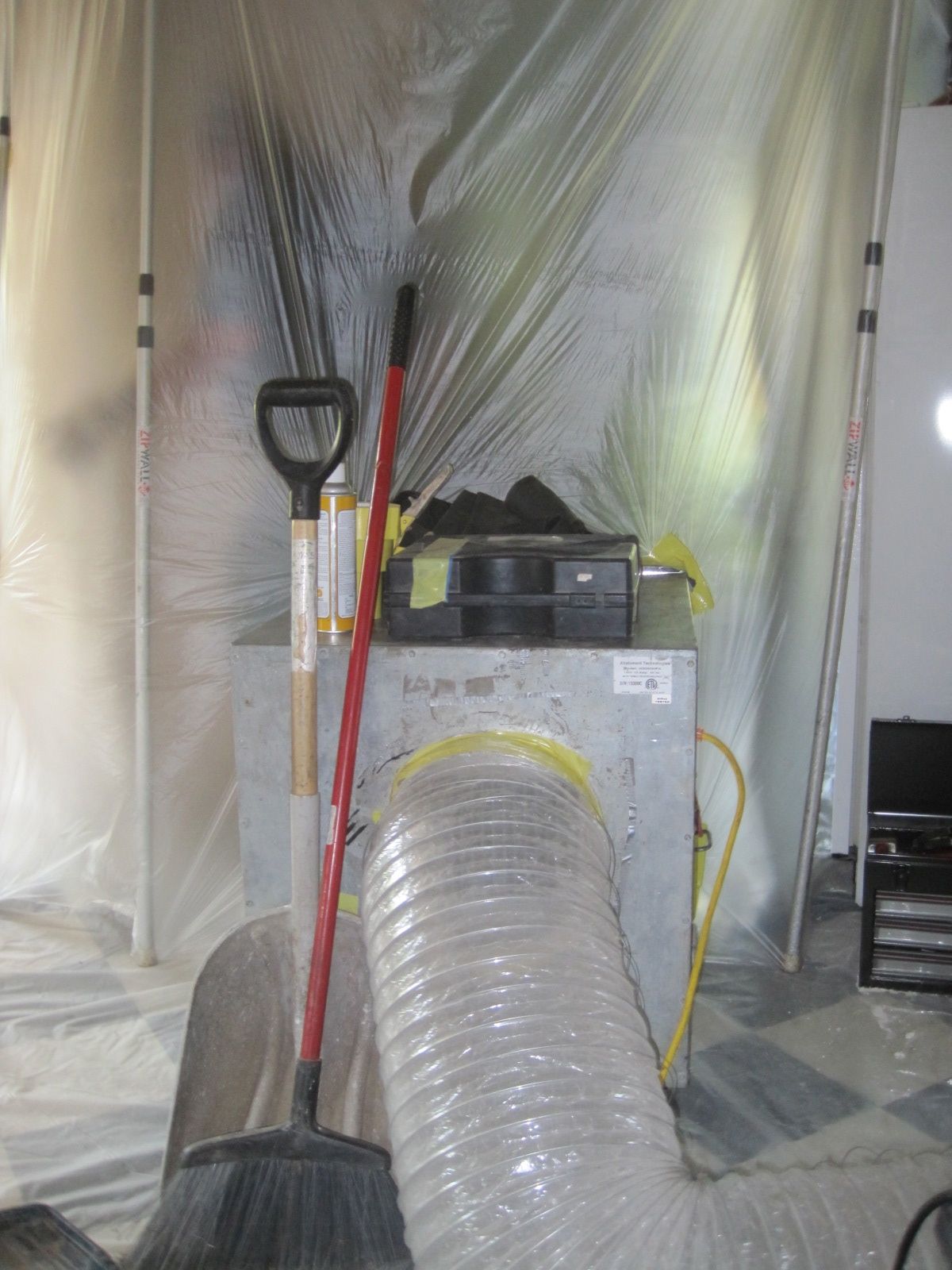
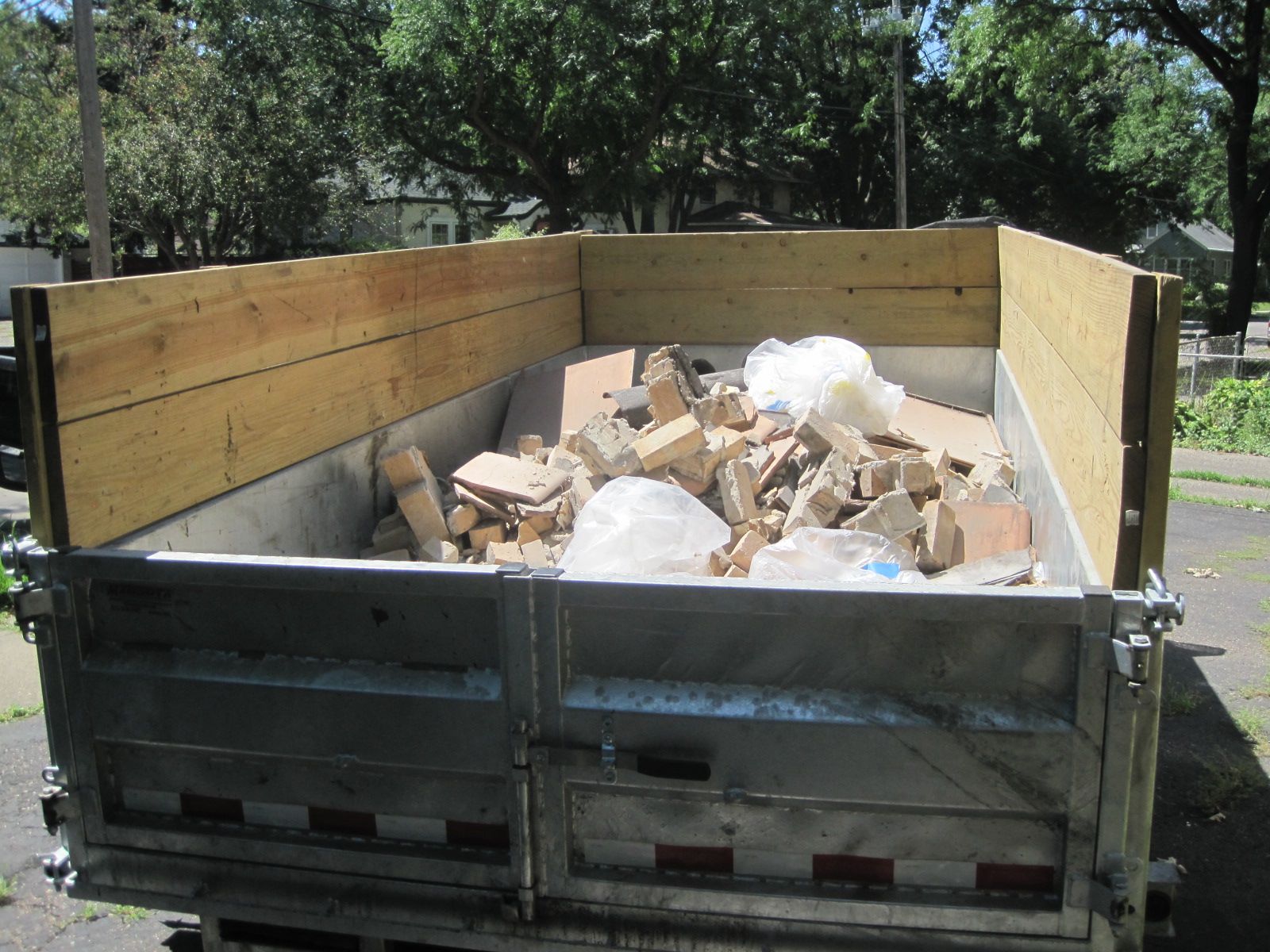
You are one busy homeowner, my friend. I hope you took today off to enjoy your birthday!
Many many thanks to you for writing this amazing post.